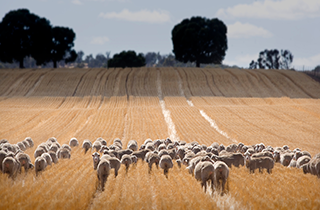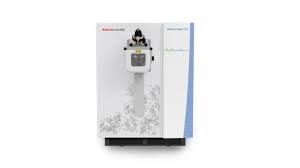Thursday, 13 November 2025
Australian red meat sector hits historic highs in FY25
These results show that continued adoption of new technology and innovation on-farm, along with investments in supply chain efficiency Australia’s red meat sector has recorded a historic year, with beef…

These results show that continued adoption of new technology and innovation on-farm, along with investments in supply chain efficiency
Australia’s red meat sector has recorded a historic year, with beef production reaching an all-time high, lamb slaughter holding near-record levels, and mutton throughput surging to its highest in nearly two decades, according to the latest Australian Bureau of Statistics (ABS) figures released in collaboration with Meat & Livestock Australia (MLA).
MLA’s Acting Market Information Manager, Erin Lukey, said the results highlight the strength and resilience of the industry.
“These results show that continued adoption of new technology and innovation on-farm, along with investments in supply chain efficiency, are continuing to pay dividends across the supply chain,” Lukey said. “Despite seasonal challenges in some parts of Australia, the industry has delivered record beef production and maintained strong lamb and mutton throughput.”
Beef: Record-breaking production
Australia processed 8.88 million head of cattle in FY25, the third-largest annual slaughter since 1978 and the highest since 2015. Beef production reached a record of 2.75 million tonnes, surpassing the previous peak set in 2015.
Queensland led the rise, increasing throughput by 13 per cent to more than 1 million head, while New South Wales, Victoria, and Tasmania all reported their strongest quarterly figures in more than a decade.
The June quarter alone saw 717,891 tonnes produced, the largest quarterly output ever, driven by improved feedlot turnoff and productivity gains.
Lamb: Holding steady under pressure
Lamb slaughter totalled 26.06 million head for the year, the second-highest on record, while annual production reached 624,549 tonnes. Heavier lamb carcases, averaging 24.8kg, helped maintain production despite a 4 per cent year-on-year decline.
New South Wales, South Australia, Western Australia, and Tasmania recorded increases, with Tasmania up 18 per cent, while Victoria saw an 8 per cent decline due to dry conditions and earlier turnoff decisions.
Mutton: Highest volumes since 2007
Mutton slaughter surged to 11.7 million head the highest level since 2007, reflecting widespread destocking, particularly in southern states. Victoria recorded its largest annual turnout since 1981 with 4.4 million head.
National mutton production rose 12 per cent year-on-year to 294,757 tonnes, though output eased in the June quarter as destocking pressures slowed. Average carcase weights fell to 23.9kg, the lowest since 2019.
“The mutton data reflects significant destocking pressure, particularly in southern regions,” Lukey said.
Despite seasonal challenges, MLA said the financial year results demonstrate how Australian producers have strategically adapted to conditions while continuing to deliver strong supply chain outcomes.
Technology
Tetra Pak opens Product Development Centre in France
Nov 13, 2025 | Company News
MENU ORDER AI to launch app aimed at GLP-1 users and health-conscious diners
Nov 10, 2025 | Company News
Harnessing Quantum AI for Greener Minds and Healthier Futures
Nov 10, 2025 | Interaction
Food Testing
Intertek acquires Costa Rican testing business Suplilab
Nov 07, 2025 | Company News
Thermo Fisher Scientific launches Orbitrap mass detector for food safety testing
Oct 24, 2025 | Company News
ADM advances quality capabilities with opening of new Central Milling Laboratory
Oct 16, 2025 | Company News
More Popular
Syren Spreads launches spoonable adaptogenic beauty chocolate
Nov 13, 2025 | Company News
Gunpowder Irish Gin expands with new Italian Fig & Laurel Expression
Nov 13, 2025 | Beverages
8 winter foods that transform your skin by healing your gut first
Nov 13, 2025 | Beverages






